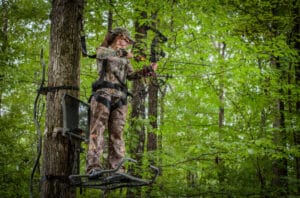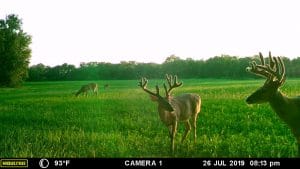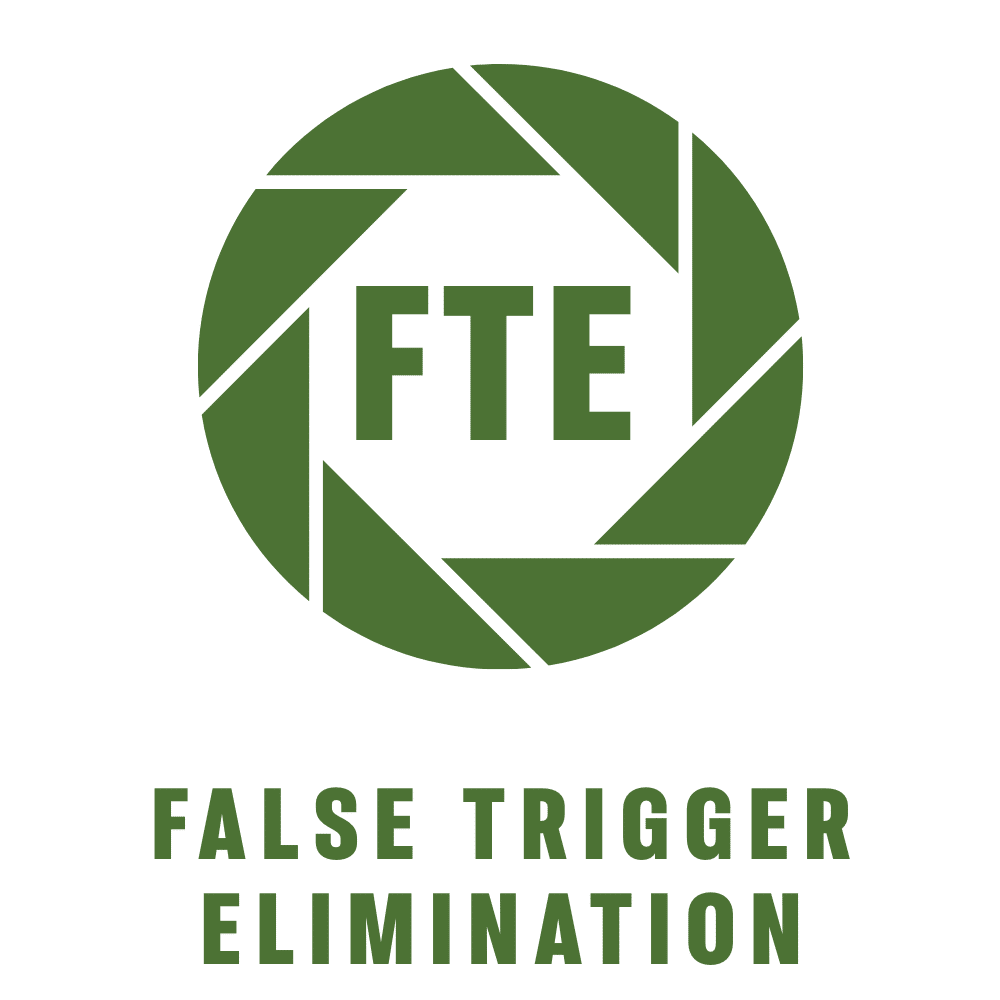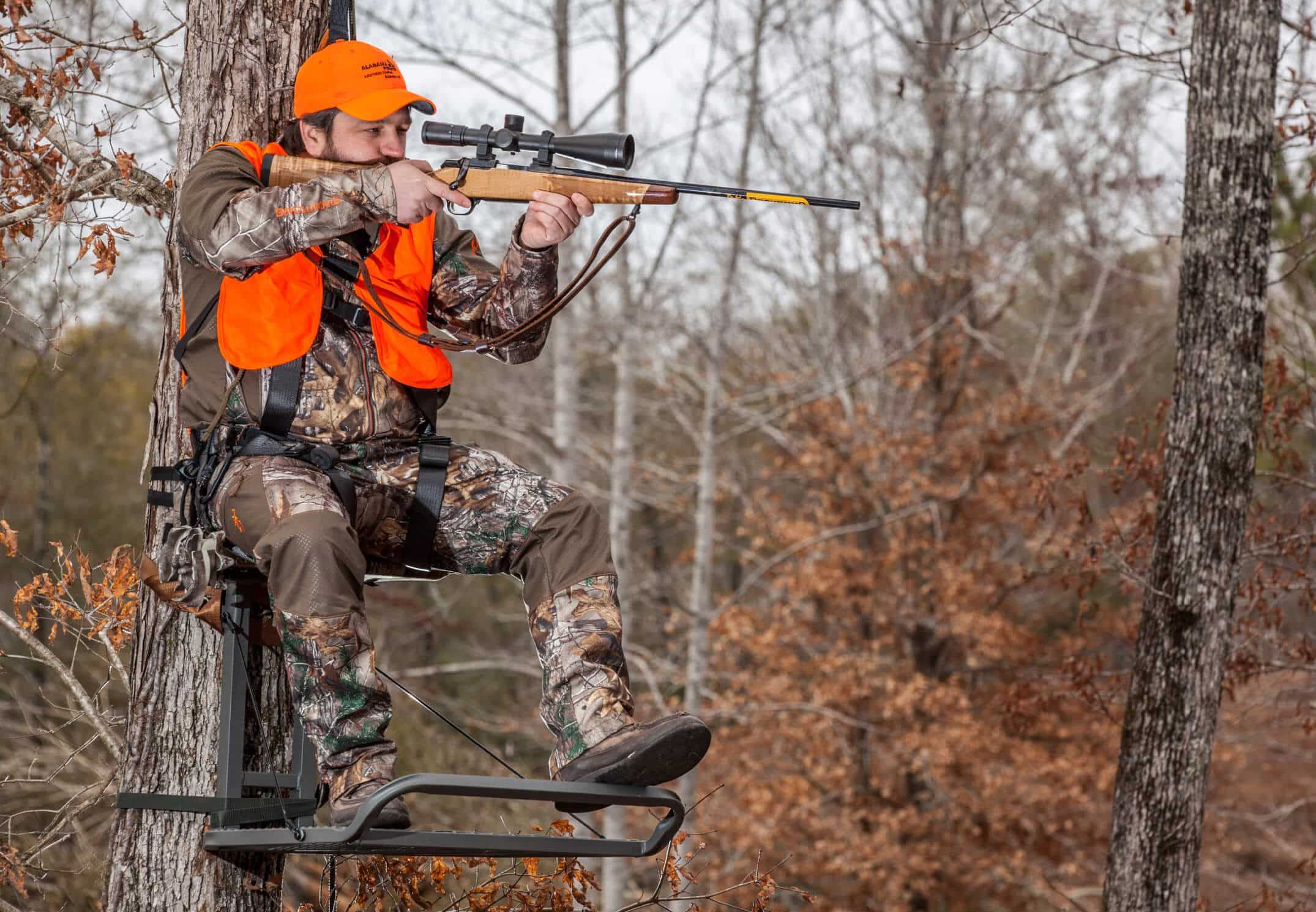8 Tips For New Deer Hunters
If you’re new to hunting or thinking about hunting, congratulations! Deer hunting is a fun and resourceful way to spend quality time outdoors with friends and family — while also harvesting free-range organic meat. Whether your goal is pursuing a trophy buck or feeling more connected to the land, becoming a deer hunter can be challenging. However, these top tips will give you a leg up this fall and keep you from making so many beginner’s mistakes while getting started.
1. Go Hunting With A Friend
Many of us know someone who hunts. Don’t be shy about asking questions and ask if you can tag a long, too. There can be a steep learning curve when learning how to deer hunt. Hunting with a friend who already knows the ropes can save you a lot of time and effort. Plus, they might even have a deer rifle or bow that you can borrow, practice and hunt with. That way you become more familiar with the sport of deer hunting before investing too much money up front.
2. Attend A Hunting Mentorship Program
If you don’t know anyone who hunts, then go online and search for local hunting mentorship programs or call your state’s game and fish department and ask what’s available. Mentorship programs like the National Deer Associations Field to Fork program is a food-focused hunter recruitment program for adults from non-hunting backgrounds. Participants attend hunts and events where they are paired with experienced hunters and get valuable one-on-one instruction in the field while hunting and after the harvest. Programs like these will not only accelerate the learning curve but can help open the door to new friends and hunting opportunities for the future.
3. Practice Like You’re Hunting

Perfect practice makes perfect, right? That’s why it’s so important that you practice with the weapon you’ll be hunting with, whether that’s with archery or firearm equipment. While you should practice shooting your bow as much as possible in the backyard or with your rifle at the rifle range, you should also practice as you’ll be hunting. It’s one thing to practice with your bow while standing on flat ground, but it’s entirely different while standing in a tree stand 15 to 20 feet off the ground. Likewise for gun hunters, it might seem easy to hit the bull’s-eye while sitting on a nice shooting bench and breathing calm, but what about when it’s cold and your adrenaline is coursing through your veins? If you’ll be hunting from a treestand or ground blind, then make sure to practice shooting from them. If you’re a gun hunter and you’re at the shooting range practicing with a rifle, then leave the rifle on the bench aimed safely down range while you run in place behind the shooting bench for 30 seconds to a minute and then try hitting the bull’s-eye. You’ll learn to squeeze the trigger at the right time while your crosshairs are dancing all over the target. This will pay major dividends when a deer walks out during the hunt.
4. Know The Wind Direction
This is perhaps the most important aspect of deer hunting. If a deer smells you, the game is over. You might be thinking, “I don’t stink!” Oh yes you do — to a deer! Deer have an incredible sense of smell, and they are used to the natural smells around them. One hint of deodorant, perfume, bacon, gas, or any other non-natural smell will seemingly send deer fleeing for the next county. Oh, and by the way, they can smell you from several hundred yards away! The way you combat this is by knowing what direction the wind will be blowing during each hunt. Think about the area you’ll be hunting, then think about where the deer will be coming from and heading to. You want to make sure you are downwind of where the deer will be, or at least make sure your scent won’t cross where deer will be walking. And when imagining your setup, think of your scent as a cone shape, with the tip of the cone originating from your position and getting wider as it blows downwind. This will help you identify potential stand and ground blind locations so that you don’t get detected by a deer’s nose before making the shot.
5. Hunt Between Feeding and Bedding Locations
As a new hunter you are probably wondering where I should begin. Afterall, the woods can look all the same to a new hunter, but deer typically aren’t just wandering everywhere in the woods. The key to intercepting deer while they are traveling is to know where they are bedding and where they are feeding. Deer will often bed in thick cover and tall grasses. This offers them protection from the cold wind while allowing sunlight to warm them on cold days. A deer’s feeding location can range from the grass and shrubs in someone’s backyard, to well-maintained food plots, to agricultural fields where corn and soybeans were grown, or an oak tree dropping acorns on the ground. Once you locate thickets where deer might bed, look for trails and deer tracks going and coming, this could be a good spot for hunting. Same goes for feeding areas, look for lots of deer tracks and look for deer droppings as they will often relieve themselves in areas where they are heavily feeding. Once you’ve pinpointed these locations look for a good stand or ground blind site to catch the deer going back to bed in the mornings and coming out to feed in the evenings.
6. Use Trail Cameras

Trail cameras are the ultimate scouting tool because they are your eyes in the woods 24/7. Trail cameras range in cost from under $100 to more than several hundred dollars. They are small and convenient to use and strap directly to a tree or post and take day and nighttime photos. You can choose between digital trail cameras that record all photos on a single SD card or you can opt for cellular trail cameras that will send the images to your phone. These cameras run on AA batteries and use motion detection to take a photo whenever anything walks in front of it. These cameras should be placed 2 – 3 feet off the ground and aimed down a deer trail, overlooking a feeder or food plot or anywhere else you see lots of deer sign. You will know exactly what deer are in the area and what time they are coming out, and it is a lot of fun checking the photos from your cameras.
7. Be A Safe Hunter
Safety is the most important aspect of hunting. Not only does a hunter use a lethal weapon to harvest game but climbing into tree stands is another aspect of safety that must be learned. Thankfully 49 of the 50 states require hunter safety courses or classes for an individual to get their hunting license. You can go online to search for hunter’s safety courses in your state.
8. Know What To Do After The Harvest

So, the game plan came together, and you finally harvested your first deer! Now what? Now it’s time to get to work. Depending on what region of the country you live in, an average young buck or doe can weigh from 100 to 150 pounds, with more mature bucks reaching well over 200 pounds. That is a lot of dead weight to drag out of the woods. You need to have a game plan in place before you head afield. Make sure you have friends or other hunters on standby who can help you recover a deer from the field right away.
Plus, you’ll need to get the animal’s entrails removed ASAP after the kill. If you’ve ever had deer meat and thought it tasted gamey, it’s because it wasn’t handled properly after the harvest, not because deer meat is gamey tasting. As soon as an animal is harvested it begins to decompose as the body heat allows bacteria to multiple fast. The meat must cool as quickly as possible to preserve the delicious flavor of venison. If you harvest a deer in warm weather then you’ll need to get the meat cooled right away at a local processor, in a walk-in cooler or de-bone the meat and place on top of ice in a cooler. If the temperature is below 45 degrees outside, then you can gut and let the deer hang overnight or even for a few days before having the venison butchered.
These are just a few tips that will get you pointed in the right direction as you begin your journey of becoming a deer hunter. Deer hunting is a fun activity that helps manage a state’s natural resources while supplying you and your family with lots of delicious venison steaks, burgers, stew and more. Good luck out there this fall and stay safe!
Other Helpful Resources:


Featured
Juicy homemade jalapeno cheddar brats are perfect for grilling all summer long. They’re packed with all the right seasonings and fresh ingredients, making them extra tasty.

Featured
MeatEater and Moultrie Mobile join teams to bring hunters closer to nature.

Featured
These wild turkey skewers are tender and smothered in a homemade teriyaki glaze. Wild turkey sometimes gets a bad reputation for being a tough meat but when prepared properly using the steps in this recipe, the results are amazing.



